Features
The evolutionary biologist Olivia Judson wrote, ‘The battle of the sexes is an eternal war.’
Males and females not only behave differently in terms of sex, they are evolutionarily programmed to do so, according to a new study from Oxford, which found sex-specific signals affect behaviour.
Males and females not only behave differently in terms of sex, they are evolutionarily programmed to do so
The new study from Oxford’s Goodwin group from the Department of Physiology, Anatomy and Genetics says, despite sharing very similar genome and nervous system, males and females ‘differ profoundly in reproductive investments and require distinct behavioural, morphological, and physiological adaptations’.
The team argues, ‘In most animal species, the costs associated with reproduction differ between the sexes: females often benefit most from producing high-quality offspring, while males often benefit from mating with as many females as possible. As a result, males and females have evolved profoundly different adaptations to suit their own reproductive needs.’
Males and females have evolved profoundly different adaptations to suit their own reproductive needs
The question for the researchers was: how does selection act on the nervous system to produce adaptive sex-differences in behaviour within the bounds set by physical constraints, including both size and energy, and a largely shared genome?
Today’s study offers a solution to this long-standing question by uncovering a novel circuit architecture principle which allows deployment of completely different behavioural repertoires in males and females, with minimal circuit changes.
The research team, led by Dr Tetsuya Nojima and Dr Annika Rings, found that the nervous system of vinegar flies, Drosophila melanogaster, produced differences in behaviour by delivering different information to the sexes.
In the vinegar fly, males compete for a mate through courtship displays; thus, the ability to chase other flies is adaptive to males, but of little use to females. A female’s investment is focused on the success of their offspring; thus, the ability to choose the best sites to lay eggs is adaptive to females.
When investigating the different role of only four neurons clustered in pairs in each hemisphere of the central brain of both male and female flies, the researchers found the sex differences in their neuronal connectivity reconfigures circuit logic in a sex-specific manner. In essence, males received visual inputs and females received primarily olfactory (odour) inputs. Importantly, the team demonstrated that this dimorphism leads to sex-specific behavioural roles for these neurons: visually guided courtship pursuit in males and communal egg-laying in females.
In essence, males received visual inputs and females received primarily olfactory (odour) inputs
These small changes in connectivity between the sexes allowed for the performance of sex-specific adaptive behaviour most suited to these reproductive needs through minimal modifications of shared neuronal networks. This circuit principle may increase the evolvability of brain circuitry, as sexual circuits become less constrained by different optima in male and females.
And it works, the study says, ‘Ultimately, these circuit reconfigurations lead to the same end result—an increase in reproductive success.
'Our findings suggest a flexible strategy used to structure the nervous system, where relatively minor modifications in neuronal networks allow each sex to react to their surroundings in a sex-appropriate manner.'
Furthermore, this is the first time a firm link between sex-specific differences in neuronal networks have been explicitly linked to behaviour.
According to Professor Stephen Goodwin, 'Previous high-profile papers in the field have suggested that sex-specific differences in higher-order processing of sensory information could lead to sex-specific behaviours; however, those experiments remained exclusively at the level of differences in neuroanatomy and physiology without any demonstrable link to behaviour. I think we have gone further as we have linked higher-order sexually dimorphic anatomical inputs, with sex-specific physiology and sex-specific behavioural roles.'
We have linked higher-order sexually dimorphic anatomical inputs, with sex-specific physiology and sex-specific behavioural roles
Professor Stephen Goodwin
The researchers maintain ‘evolutionary forces’ have driven these adaptations, ‘Drosophila, males compete for a mate through courtship displays, while a female’s investment is focused on the success of their offspring.’
They conclude, ‘In this study, we have shown how a sex-specific switch between visual and olfactory inputs underlies adaptive sex differences in behaviour and provides insight on how similar mechanisms maybe implemented in the brains of other sexually-dimorphic species.’
The full paper, A sex-specific switch between visual and olfactory inputs underlies adaptive sex differences in behaviour, joint-first authored by Dr Tetsuya Nojima and Dr Annika Rings, is available to read in Current Biology.
Twenty three thousand years ago, canines travelled to the New World with the First Americans
When President Biden took up residence last week in the White House, Major and Champ became the latest dogs in a long history, to follow their people on an American journey. Research published this week reveals that the relationship between not just the first Americans’ but everyone’s best friend was deeper than previously thought – 23,000 years’ deep, in fact.
According to the new research, from an international team of archaeologists and geneticists including Oxford’s Professor Greger Larson, dogs travelled alongside the first people who made the journey across the Bering straits to the Americas.
The research reveals dogs spread throughout the Americas, along with people, and developed completely separately to their European cousins
The research reveals dogs then spread throughout the Americas, along with people, and developed completely separately to their European cousins. When the first European settlers arrived across the Atlantic, bringing their dogs of course, the indigenous American dogs were genetically distinct. And, as with many indigenous peoples – the indigenous American dogs all-but died out, when confronted with European people and dogs.
Today, there is little trace left of the animals who braved the long journey during the last Ice Age, to accompany their fellow human travellers into a new land.
As with many indigenous peoples – the indigenous American dogs all-but died out, when confronted with European people and dogs
According to the study, ‘The first people to enter the Americas likely did so with their dogs. The subsequent geographic dispersal and genetic divergences within each population suggest that where people went, dogs went too.’
Professor Larson says, ‘We found a very strong correlation between the pattern of ancient dogs’ genetic diversification and the genetic signatures of early Americans. The similarities between the two species is striking and suggests the shared pattern is not a coincidence.’
He adds, ‘We knew dogs were the oldest domesticated species, and these findings now suggest that the initial process of domestication began around 23,000 years ago in north-east Siberia. From there, people and dogs moved together east into the Americas, south towards east Asia, and west towards Europe and Africa.'
We knew dogs were the oldest domesticated species, and these findings now suggest that the initial process of domestication began around 23,000 years ago in north-east Siberia
Professor Greger Larson
According to this week’s report, ‘The convergence of the early genetic histories of people and dogs in Siberia and Beringia suggests that this may be the region where humans and wolves first entered into a domestic relationship...this process likely began between 26,000 and 19,000 years ago, which precedes evidence for the first unequivocal dogs in the archaeological record by as much as 11,000.’
This is important research, not only for what it says about dogs’ arrival in the Americas, but also for what it reveals about people. And the report states, ‘Since their emergence from wolves, dogs have played a wide variety of roles within human societies, many of which are specifically tied to the lifeways of cultures worldwide. Future archaeological research combined with numerous scientific techniques, will no doubt reveal how the emerging mutual relationship between people and dogs led to their successful dispersal across the globe.’
This is not the first time Professor Larson has produced research about ancient dogs (and Dire Wolves). Does this new study reveal a preference for canines?
Imagine what society would be like if we had not formed mutually interdependent relationships with so many other domestic plants and animals. And it all started with dogs
Professor Larson
‘I grew up with dogs, and I always interact with them when they walk by’ he says. ‘Dogs were the first species to enter into a mutualistic relationship with us. It was a key shift in the evolution of our species...It is amazing how much everything began to change after that.
'For the vast majority of our species’ history we travelled alone and made a tiny impression on the earth’s ecology. Now there are eight billion of us and we depend on a range of domestic plants and animals for the maintenance of our huge global population. Imagine what society would be like if we had not formed mutually interdependent relationships with so many other domestic plants and animals. And it all started with dogs.’
The article in PNAS is available here: https://www.pnas.org/cgi/doi/10.1073/pnas.2010083118
We may not have found life on Mars, but there is considerable excitement in the Oxford scientific community about the imminent possibility of detecting the landing of NASA’s Perseverance Rover using InSight, another spacecraft which is already on the red planet.
University physicists believe that, for the first time, they might be able to ‘hear’ a spacecraft land on Mars, when Perseverance arrives at Earth’s ‘near’ neighbour in about a month’s time around 18 February.
And NASA’s new probe is certainly not arriving quietly. The unmanned craft will plunge through the Martian atmosphere at enormous speeds, accompanied by a sonic boom created by its rapid deceleration. At the point it enters the atmosphere, it will be travelling at more than 15,000 km/h and its heat shield will reach more than 1,300 degrees centigrade during the descent.
NASA’s new probe is certainly not arriving quietly. The unmanned craft will plunge through the Martian atmosphere at enormous speeds, accompanied by a sonic boom created by its rapid deceleration
It will deploy two large balance masses which will hit the ground at hypersonic speeds, crashing down at a speed of 4,000 metres per second. It is these two masses which the scientists are hoping will create detectable seismic waves - which will travel the 3,452 kilometres between Perseverance’s landing site and InSight’s location.
The ears to ‘hear’ the impact are the InSight probe, which was sent to Mars three years ago to listen for seismic activity and impacts from meteorites. Parts of the spacecraft were built at Imperial College London and tested in the Department of Physics at the University of Oxford.
InSight detects seismic activity (marsquakes) to help scientists understand better the interior structure of Mars. Although many hundreds of marsquakes have been detected since InSight’s landing in 2018, no impact events (meteorites hitting the surface and producing seismic waves) have been detected. Impact events are of particular interest because they can be constrained in timing and location from pictures taken by orbiting satellites, and thus used to ‘calibrate’ seismic measurements.
So, the arrival of Perseverance Rover potentially offers the first opportunity to detect a known, planned landing of a foreign body on the surface of the planet. It could provide a wealth of evidence on the structure and atmosphere of Mars and has got the scientific community very excited about its potential.
According to Oxford physicist, Ben Fernando, a member of the InSight team, ‘This is an incredibly exciting experiment. This is the first time that this has ever been tried on another planet, so we’re very much looking forward to seeing how it turns out.’
This is the first time that this has ever been tried on another planet, so we’re very much looking forward to seeing how it turns out
InSight team member, Ben Fernando
InSight’s seismometers are potentially sensitive enough to detect Perseverance’s landing, even though this is expected to be very challenging - given the significant distance between the two landing sites. It is around the same distance as from London to Cairo. Nevertheless, the Oxford team believes the impact could potentially be detected by InSight and thus provide an immensely useful ‘calibration’.
According to Ben Fernando, ‘This would be the first event detected on Mars by InSight with a known temporal and spatial localisation. If we do detect it, it will enable us exactly to constrain the speed at which seismic waves propagate between Perseverance and InSight.’
A newly-published paper from the InSight team states, ‘Perseverance’s landing is targeted for approximately 15:00 Local True Solar Time (LTST) on February 18, 2021 (this is 20:00 UTC/GMT on Earth).’
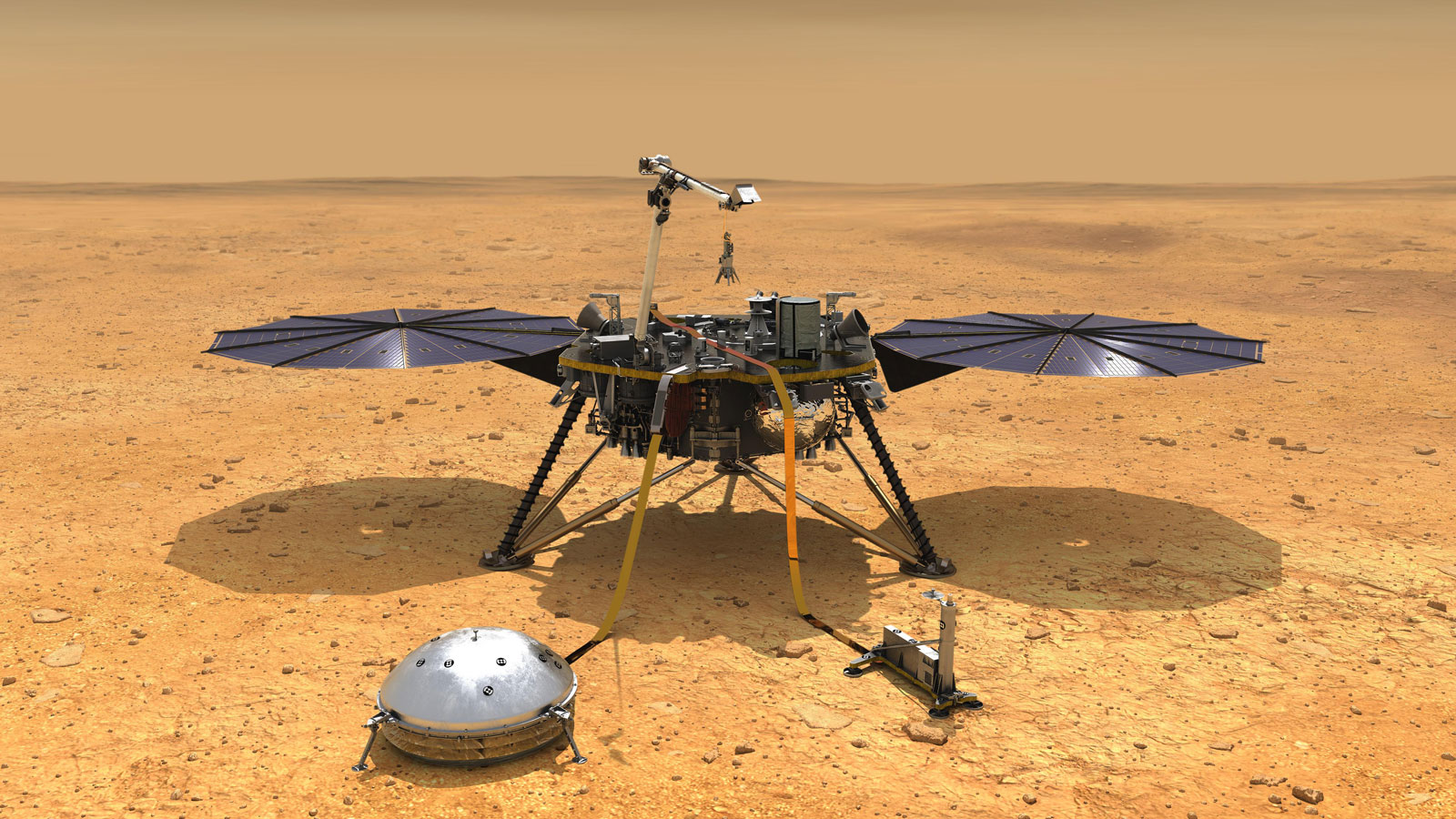
The paper continues, ‘The spacecraft will generate a sonic boom during descent, from the time at which the atmosphere is dense enough for substantial compression to occur (altitudes around 100 km and below), until the spacecraft’s speed becomes sub-sonic, just under three minutes prior to touchdown. This sonic boom will rapidly decay into a linear acoustic wave, with some of its energy striking the surface and undergoing seismo-acoustic conversion into elasto-dynamic seismic waves, whilst some energy remains in the atmosphere and propagates as infrasonic pressure waves.’
The paper concludes, ‘We identified three possible sources of seismo-acoustic signals generated by the EDL (entry, descent, landing) sequence of the Perseverance lander: (1 ) the propagation of acoustic waves in the atmosphere formed by the decay of the Mach shock, (2) the seismo-acoustic air-to-ground coupling of these waves inducing signals in the solid ground, and the elasto-dynamic seismic waves propagating in the ground from the hypersonic impact of the CMBDs.’
InSight will ‘listen’ for the acoustic signal of the sonic boom in the atmosphere. But scientists think the best chance of detecting the landing will be the seismic impact of the balance masses.
The team expects to receive data from InSight within a day or two of Perseverance’s landing, after which they will investigate whether they have made a successful detection.
Short explanatory video: http://bit.ly/insight-m2020-video
Instagram film: https://www.instagram.com/tv/CJvxmSaokd3/
COVID-19 has asked a lot of everyone. At the national level, decisions have been taken that affect everything from people’s movements to the running of businesses. For many, there are also individual decisions in which personal risks are weighed: Should I venture to my local grocery store, or should I shop online? Can I eat at the restaurant, or should I buy take out?
In many households, dinner time musings often drifted to something like the following: 'I have barely seen anyone in person for many weeks. I know my neighbours haven’t either. My favourite park is much emptier than usual and the community around me has made many sacrifices. Does this mean COVID-19 is actually decreasing in my area?'
While most people have a UK-wide view and newspapers report national statistics, the decisions that people make to help contain the pandemic are at an individual and personal level. The behaviour of people in Oxford has no sizable effect on COVID-19’s growth or decline in far away Scotland, and these decisions need real-time, local information, an up to date resource that anyone can access to see how their town or county is doing.
View Local Covid UK Map here: https://localcovid.info/
Using historical COVID-19 case counts, the map at localcovid.info shows an estimate for the R number in each local area, along with projections of how the epidemic might develop in the next two weeks
The reproduction number or “R number” tells us about the growth and decline of COVID-19. It is an estimate of the number of people that someone with COVID-19 will pass the virus on to. A reproduction number of R=2 means that an infected person is likely to transmit the virus on to two other people, each of whom then passes it to two more people, and the epidemic grows quickly. On the other hand, if R=1, then on average each infected person only infects one other person and the size of the epidemic remains roughly constant. A reproduction number of R<1 is good news: the number of new infections is reducing and over time the epidemic will shrink.
Yee Whye Teh, Professor of Statistical Machine Learning at the Department of Statistics, University of Oxford, explains how the national “R number” is made up of many local parts: 'The national R number describes an average transmission rate across the nation. It is an aggregate statistic made up of many smaller contributions, and belies significant variations in COVID-19 transmissions rates, both geographically as well as across different sections of society. In order to inform individual decisions, local information relevant to the individual is needed.'
Led by Professor Teh, a team from the Computational Statistics and Machine Learning research group at Oxford’s Department of Statistics has built a model that monitors the daily spread of the virus locally. Their results can be accessed online by anyone at localcovid.info, which gives an informative view of the rate of transmission of COVID-19 in areas such as Oxford, Cherwell, West Oxfordshire, Swindon and more than 300 other local authorities in the UK.
Using historical COVID-19 case counts, the map at localcovid.info shows an estimate for the R number in each local area, along with projections of how the epidemic might develop in the next two weeks. The estimates of R in the map contain what statisticians call “error bars” or “credible intervals”. These are there to say that no one knows the true R number in an area, but we are quite sure that we can pin it down to within a narrow band. For example, in the map snapshot December 14, we are 95% sure that R is currently between 0.7 and 1.4 in Oxford, with a median of 1.0, given the team’s statistical model and the data available.
The real work dynamics of epidemics are incredibly complicated.
Michael Hutchinson, a PhD student in professor Teh’s group, explains how the “R number” is estimated from data: 'This is a difficult task. The real work dynamics of epidemics are incredibly complicated. To begin estimating the R number we start by proposing a simplified statistical model of the real world which captures the most important aspects of the epidemic. We never observe the R number directly, we only observe positive COVID-19 cases. We know that the R number drives new infections however, so using the model and observations of numbers of cases we can infer what R is likely to be. Essentially, using what we see in the world, we reverse engineer what the unobservable R is.'
The statistical model underlying these estimates of R relies on publicly available Pillar 1+2 daily counts of positive PCR swab tests by specimen date, for 312 lower-tier local authorities in England, the 14 NHS Health Boards in Scotland and the 22 unitary local authorities in Wales. The model makes additional use of commuter flow data from the UK 2011 Census and population estimates, as COVID-19 spreads not just among the population of individual areas, but also across areas. As with many aspects of statistical epidemiology, these estimates of R need to be read with care, and in the context of other pieces of data that provide relevant information, e.g. data from the ZOE symptom tracker, seroprevalence studies, test positivity rates, as well as hospitalisation and death rates.
Dr. Ulrich Paquet, a research scientist seconded to the group, noted: 'We are pleasantly surprised to see how the estimates for R have dropped below one for a while in many areas, especially in the North where Tier 3 rules applied since October. We guess that we shouldn’t be surprised to see the result of public behaviour and national action show up so clearly in a model, but we still are! As statisticians, we love it when the data speaks for itself.'
Prof. Teh concluded on a more sombre note: 'We are concerned that since the lockdown was lifted in December, many areas, particularly in the Southeast and London, have seen cases continue to increase. We hope the tool we built at localcovid.info will be helpful to you, in making your decisions to stay safe and to help protect your loved ones.'
Track your local area on the Local Covid UK Map here: https://localcovid.info/.
Social distancing has become one of the key strategies for reducing COVID-19 transmission, together with mask wearing and contact tracing. However, a new study, published in the journal PLOS ONE, maintains it is possible to maximise the impact of social distancing on viral transmission and minimise its impact on the economy and people's well-being - by focusing on the people who are the main drivers of infection.
A new study, published today...maintains it is possible to maximise the impact of social distancing...and minimise its impact on the economy and people's well-being - by focusing on the people who are the main drivers of infection
Lockdowns are a very effective way to reduce transmission and may be necessary, when the infection rate has to be curtailed rapidly, for example because of very high case rates. But lockdowns are disruptive and, in the longer term, more sustainable methods could be adopted.
Today’s study differs in approach from many of the main epidemic models in that it focuses specifically on the role of individuals and, in particular, on the very wide variation seen in the behaviour of different people.
Some individuals interact at a much higher rate than others, because of their work, living conditions or social habits - increasing both their chances of being infected and the probability that they will infect others. The simple theoretical model presented in this paper shows that these people are not only the main drivers of infection, but also the key to controlling the epidemic.
This study shows that social distancing can be highly effective in controlling viral transmission. By reducing the interactions of the most interactive individuals, this can be done while maintaining significant levels of activity in the population as a whole.
Social distancing can be highly effective in controlling viral transmission. By reducing the interactions of the most interactive individuals, this can be done while maintaining significant levels of activity in the population as a whole
Professor Christopher Ramsey, the author of the study and a physicist specialising in interdisciplinary science in the School of Archaeology, says, ‘Until vaccination is widespread, we might have to consider that social interaction time is like exposure to the sun, very beneficial in limited amounts, but harmful in excess.’
Since, in many countries, workplaces have been made relatively COVID-secure, social interaction outside the household has come to play a dominant role in viral transmission. Completely stopping such interactions will work, as in a total lockdown, but is a drastic measure and needs to be time-limited.
Many countries have found that, once socialisation is allowed again, infection rates rise. The model in this paper suggests this is largely because of the high interaction rates of a minority of people, rather than the interaction rates in the population as a whole.
For countries trying to reopen society in a controlled way, a way forward would be to limit interaction rates for individuals. So, rather than simply allowing or forbidding mixing between households in homes and hospitality venues, it would be more effective to say how frequently this can be done safely.
When rates of infection are still moderate, it might be necessary to recommend socialising no more than once a week. As rates improve, this might be relaxed to once every three days, and then unrestricted when the infection rate is very low. This could provide much finer control over the interaction rates than opening and closing bars and restaurants, and it could enable economic activity and some socialisation for everyone most of the time.
This approach should work, if people comply, because someone who socialises every day, rather than just once a week, has seven times the chance of becoming infected and also seven times the probability of infecting someone else
This approach should work, if people comply, because someone who socialises every day, rather than just once a week, has seven times the chance of becoming infected and also seven times the probability of infecting someone else. This person’s potential to spread the virus is nearly 50 times higher!
For this reason, the model suggests, the key aim of social distancing policies should be to avoid a minority of individuals interacting far more than the average. Such an approach would also help contact-tracing, since relevant contacts would be fewer if social interactions were limited to once every few days and so more time could be spent following them up properly.
As widespread mask wearing, improvements in the weather and, ultimately, vaccination help contain the disease, the extent to which socialisation should be possible will gradually increase until we get back to a more normal situation. Ideally, this should be possible without multiple waves of infection and the associated extreme measures that might be needed to bring these under control. However, to do so will need us to focus on individual behaviour and when it comes to social interactions that also implies individual responsibility.
- ‹ previous
- 27 of 248
- next ›
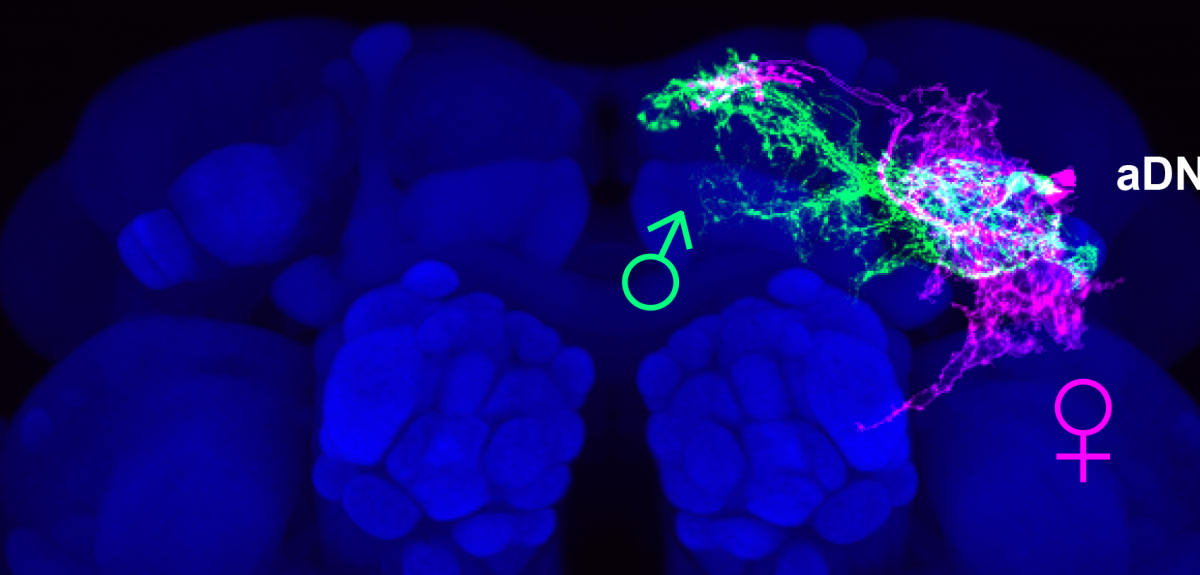
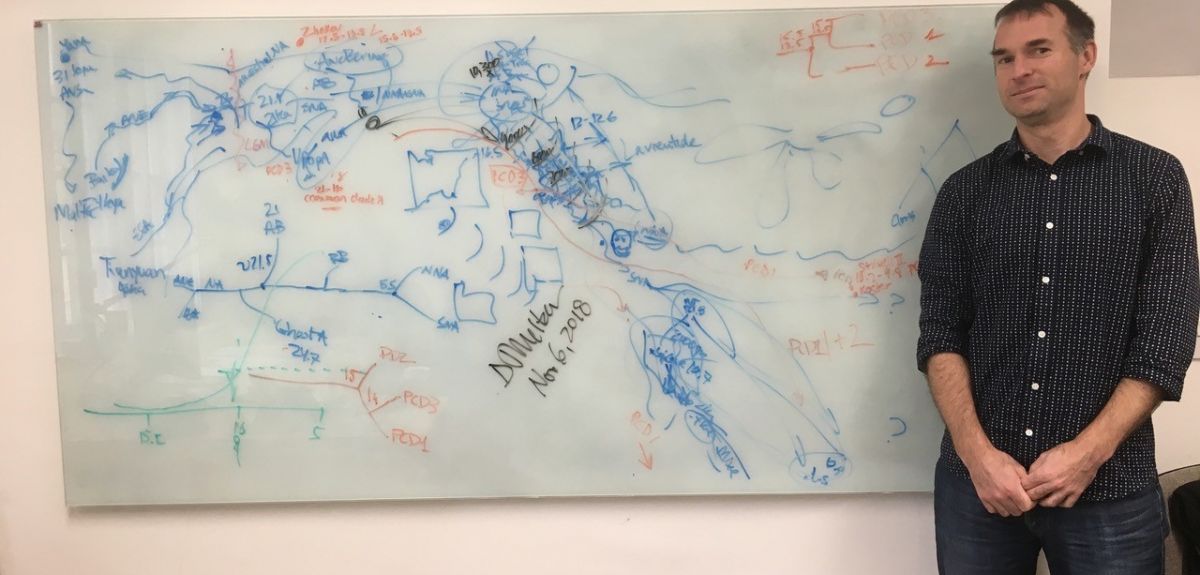

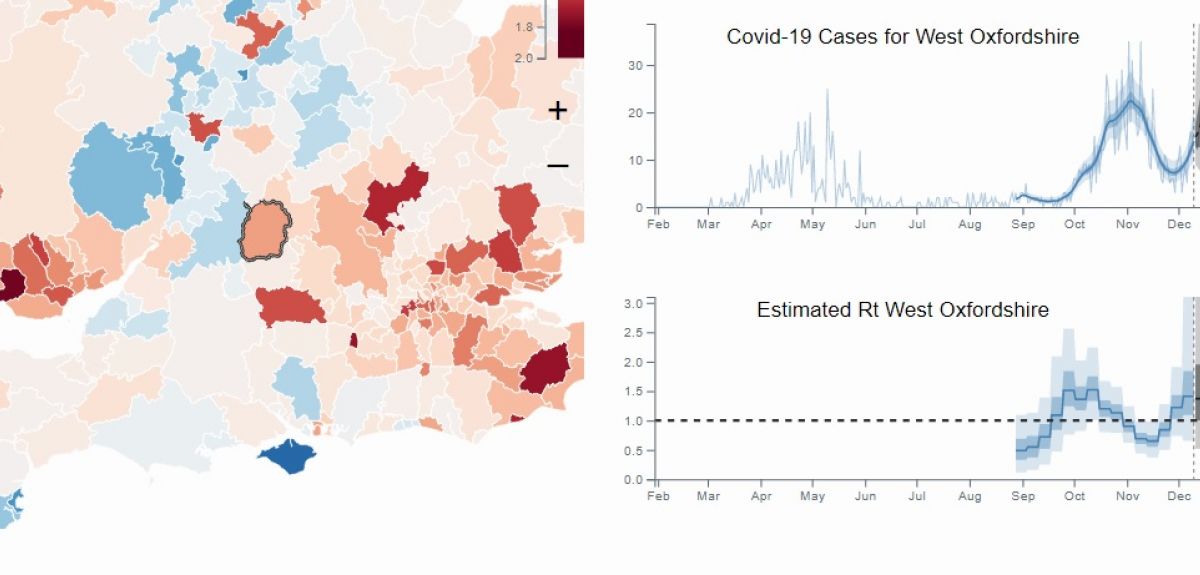
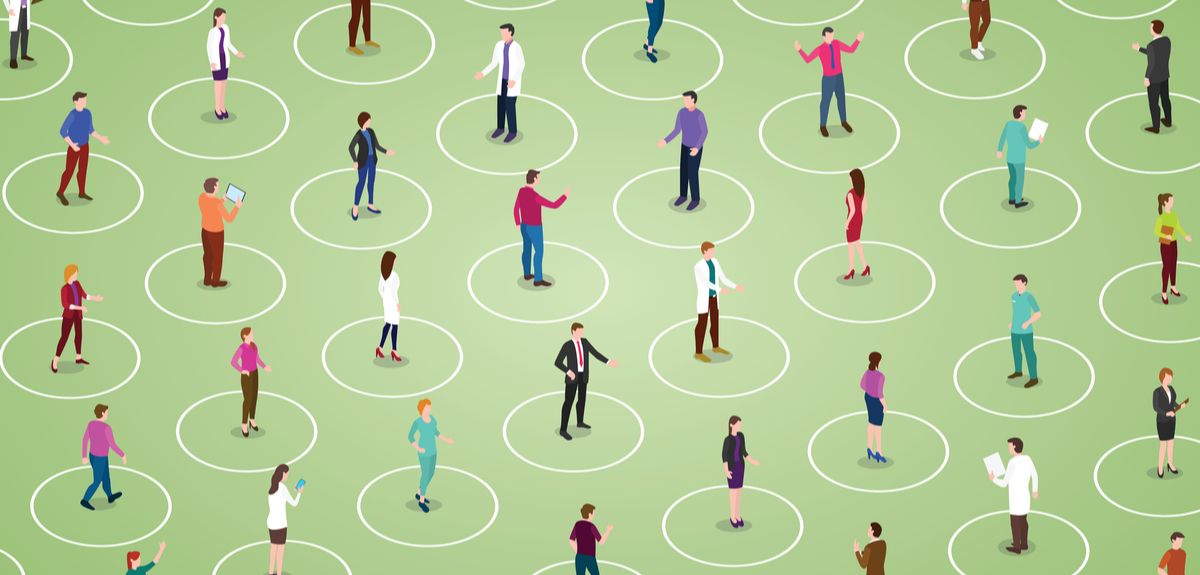
 A blueprint for sustainability: Building new circular battery economies to power the future
A blueprint for sustainability: Building new circular battery economies to power the future Oxford citizen science project helps improve detection of antibiotic resistance
Oxford citizen science project helps improve detection of antibiotic resistance The Oxford students at the forefront of the fight against microbial resistance
The Oxford students at the forefront of the fight against microbial resistance  The hidden cost of AI: In conversation with Professor Mark Graham
The hidden cost of AI: In conversation with Professor Mark Graham  Astrophoria Foundation Year: Dr Jo Begbie reflects on the programme’s first year
Astrophoria Foundation Year: Dr Jo Begbie reflects on the programme’s first year World Malaria Day 2024: an interview with Professor Philippe Guerin
World Malaria Day 2024: an interview with Professor Philippe Guerin From health policies to clinical practice, research on mental and brain health influences many areas of public life
From health policies to clinical practice, research on mental and brain health influences many areas of public life From research to action: How the Young Lives project is helping to protect girls from child marriage
From research to action: How the Young Lives project is helping to protect girls from child marriage  Can we truly align AI with human values? - Q&A with Brian Christian
Can we truly align AI with human values? - Q&A with Brian Christian